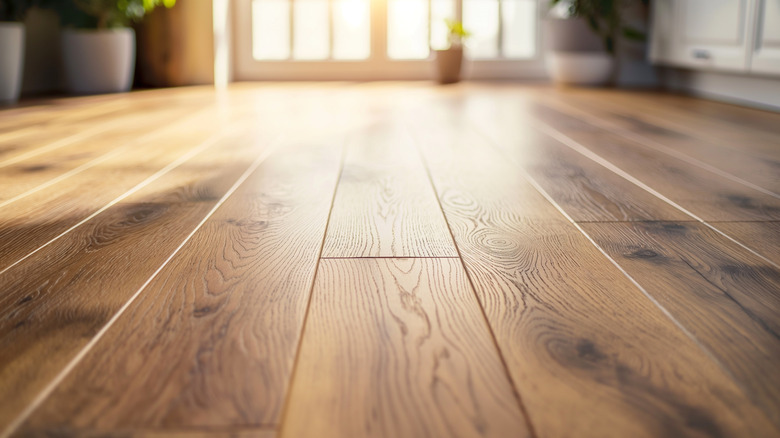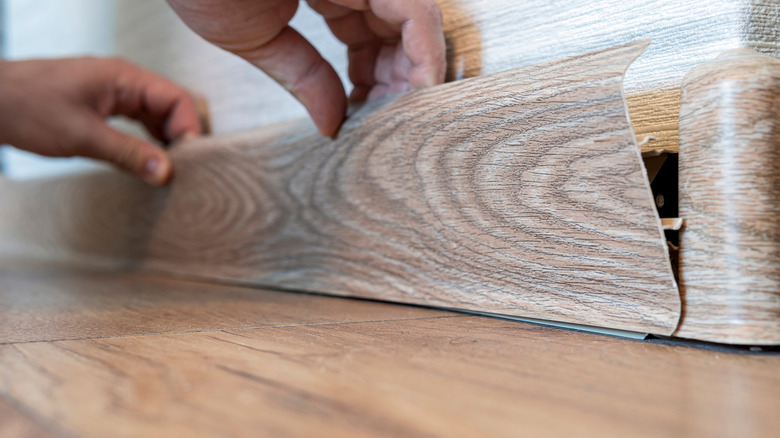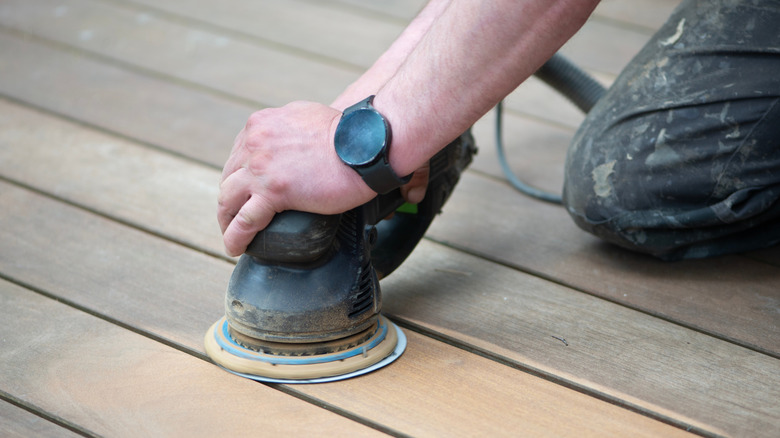Our Expert's Top Tips To Know Before Refinishing Hardwood Floors
When it's time to change up your floors, you may be deciding between refinishing your hardwood floors through DIY or by hiring a professional. If you decide to do the work yourself, you want to be confident about the process. Finding tips for refinishing hardwood floors is important, and to ensure we're providing the best tips for our readers, we decided to reach out to a hardwood flooring refinishing expert, Bob Beacham, who is House Digest's expert carpenter and remodeler. We asked our expert about common tips and advice about refinishing floors that may be misleading and what homeowners should do differently. Before digging into specific tips, we asked Beacham about the best ways for homeowners to feel confident in the process.
"You need time, patience, and to invest in [renting] the proper equipment," Beacham told House Digest in an exclusive interview. "You also need to buy new brushes or rollers. Anything that's already been used can contaminate the new finish. Buy quality so it doesn't drop hairs or fluff." Beacham says you shouldn't necessarily rely on YouTube videos for instructions. "In terms of learning, I would recommend a visit to a library," he says. "Having said that, there is good advice out there, you just need to be careful. Assess the presenter(s). Pros will often link to their own website. Hobbyists may only be in it for the clicks and likes."
Mistakes to avoid when preparing to refinish a hardwood floor
Although most people focus on the actual refinishing process, Beacham says you can't ignore the preparation work. One common mistake is not taking the time to remove baseboards and seal the doorways in the room. Beacham says removing the baseboards is important to "get right up to the wall. Otherwise you'll have an ugly strip around the edge of the room that always looks a different color."
He says some people fail to remove all the furniture from the room and don't seal the doorways with plastic secured in place with painter's tape. "Sanding dust gets everywhere, and if it isn't contained, it will get into adjacent rooms and take forever to clean up," Beacham said in an exclusive interview with House Digest. "Any furniture that can't be removed needs to be covered in plastic sheeting and the edges taped. Same for things like air ducts, wall-mounted split air conditioning units."
If you begin preparing for the refinishing job and notice significant gouges and scratches in the floor, Beacham says you will want to think twice about trying a DIY job because poor repairs can "stick out like a sore thumb." You might want to hire a pro to help with making repairs that match what's already there. "DIY refinishing of hardwood floors is certainly doable and will almost certainly save money when compared to using a contractor," Beacham said. "However, it isn't quick, and it isn't easy. Would your time be better spent doing something else?"
Tips to avoid common errors that homeowners make while sanding their hardwood floors
One of the biggest mistakes DIY-ers make when trying to refinish a floor is trying to use small power tools they own, Beacham said. A handheld electric sander is best for small wood projects, like an orbital sander or a belt sander. However, if you're going to do a large hardwood floor refinishing, renting an industrial or commercial drum sander is a must. Using a handheld sander "will take forever, and you'll never keep it properly flat, so the floor will be uneven," Beacham said in an exclusive interview with House Digest.
Some tool rental locations may try to convince a homeowner that a large square belt sander or a power drywall sander is adequate for refinishing hardwood floors, but Beacham says this is poor advice. Only a commercial or industrial sander can do the job adequately. "Sanding should remove the existing finish and make the floor flat," he says.
Homeowners may worry about using a commercial drum sander because of the power this design provides. Beacham suggests using a medium-level grit of sandpaper instead of a coarse sandpaper at first. "Commercial sanders are designed to remove a lot of material fast," he said. "They can be very aggressive tools. Low grit of 30 to 40 sandpaper is often suggested for rapid stripping. If you haven't used one before and you start out with that, you might gouge big chunks out of the floor. Put some 100 grit on first to get used to the handling."


